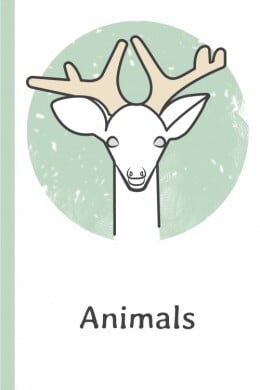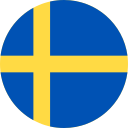Djur - Djurförökning
Här kommer du att lära dig några ord om djurfortplantning på engelska som "spawn", "hatch" och "larva".
Recension
Flashcards
Stavning
Quiz

the ability of a living organism to produce a large number of offspring or viable eggs or seeds

fruktsamhet, fortplantningsförmåga
a sexual orientation characterized by a lack of sexual attraction or desire for sexual activity

asexualitet, asexualism
a type of reproduction where a single organism can produce offspring without the involvement of another organism

asexuell reproduktion
(of birds, fish, etc.) to come out of an egg

kläckas
the process of mating animals, plants, or microorganisms with desirable characteristics to produce offspring with those same traits

avel, fortplantning
the eggs that an aquatic animal or an amphibian lays and are covered with a transparent layer

rom, lek
(of a bird, insect, fish, etc.) to produce eggs

lägga, deponera
(of an animal) to have sex and give birth to young

föröka sig, avla
a young form of an insect or an animal that has come out of the egg but has not yet developed into an adult

larv
to introduce male reproductive cells into the female reproductive system for reproduction

befrukta, gödsla
the stage of the metamorphosis that comes between the larval and adult stages of a moth or butterfly

puppa, chrysalis
a male sex hormone, such as testosterone, that is responsible for the development and maintenance of male characteristics in humans and animals

androgen, manligt hormon
(of animals) to have sex for breeding or reproduction

para sig, föröka sig
the union of a sperm and an egg to form a zygote, which marks the beginning of sexual reproduction in organisms

befruktning
the parents, grandparents and the ancestors of an animal that are all purebred, or a certificate that proves this

stamtavla, pedigree
to remove the sexual organs of a female animal, called ovaries

sterilisera, kastrera
the inability of a person, animal or plant to reproduce

ofruktbarhet, sterilitet
a person or animal that produces offspring through reproduction

uppfödare, förövare
to make an animal or plant breed with a different type

korsa, hybridisera
to remove the sex organs of a domestic animal in order to keep it from reproduction

sterilisera, kastrera
a hen that sits on her eggs with the intention of hatching them

en hön som ruvar, en höna som sitter på sina ägg för att kläcka dem
to keep an egg in a favorable condition to help it develop until it hatches

inkubera, ruva
all the young of a bird hatched at the same time, or the young of an animal cared for together

kull, avkomma
the young wormlike larva of an insect

larven, masken
an insect which is in an inactive transitory stage of its metamorphosis, between the larval and adult stages

puppa, chrysalis
the caterpillar of a silk moth that forms a cocoon during metamorphosis, which is later processed into silk

silkesmask, bombyx mori
incapable of reproducing or having children

ofruktbar, steril
a special cell used for reproduction, with sperm cells being the male gametes and egg cells being the female gametes

gamet, könscell
to carry a developing embryo or fetus inside the uterus of a female mammal until it is ready to be born

bära, bära ett utvecklande embryo eller foster
an organism that has both male and female reproductive organs

hermafrodit, tvekönad
to fertilize an egg and make it capable of developing into an embryo

befrukta, impregnera
to produce offspring sexually, typically involving the union of male and female reproductive cells

föröka sig, alstra
(of a living being) to produce offspring or more of itself

föröka sig, reproducera
ancestors of an animal, particularly while referring to the good characteristics that it has inherited from them

blodslinje, härstamning
to engage in sexual reproduction or mating

para sig, föröka sig
to go through a period of sexual activity or sexual aggression, especially in certain animals during their mating season

vara i brunst, gå in i brunst
the time between exposure to a pathogen and the onset of symptoms

inkubationstid, inkubationsperiod
to beget, procreate, or father offspring, typically used in reference to male animals

alstra, föröka sig
to introduce semen into the reproductive system, often by artificial means

inseminera
the smallest and most motile cells in the male reproductive system responsible for fertilizing the female egg

spermie
the recurring period of sexual receptivity and fertility in female mammals

brunst, östrus
| Djur |
|---|